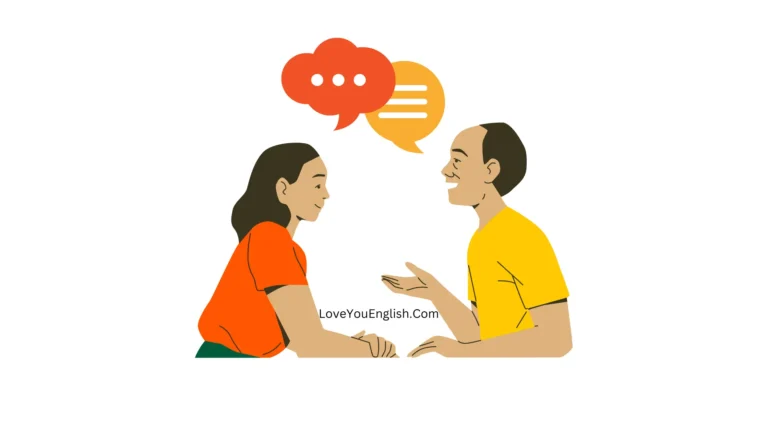Conversation in English About Indian Cinema and Bollywood
Sharing is caring!
Alex: Hey, Sam! I’ve been diving into Indian cinema lately. Have you ever explored Bollywood films?
Sam: Oh, definitely! Bollywood is such a vibrant part of Indian cinema. It’s fascinating how it combines music, dance, and drama. What have you discovered so far?
Alex: I started with some classic Bollywood films from the 70s and 80s. Movies like Sholay and Deewaar really stood out to me. The storytelling is so engaging! Do you have any favorite classics?
Sam: I’m a big fan of Mother India and Mughal-e-Azam. They’re not just entertaining but also provide a glimpse into the historical and cultural backdrop of their times. Mother India is particularly poignant with its themes of sacrifice and struggle.
Alex: Absolutely, those films are iconic. I’ve also noticed how Bollywood movies often feature elaborate musical numbers. It’s like each film is a celebration of its own. Do you have a favorite Bollywood song or dance sequence?
Sam: That’s a tough one! I’d say the song “Jai Ho” from Slumdog Millionaire is unforgettable. Even though it’s more of a crossover film, the energy of the song captures the essence of Bollywood’s musical charm. What about you?
Alex: I’d have to go with “Tum Hi Ho” from Aashiqui 2. It’s such a beautiful, emotional song. The way Bollywood integrates music into the narrative is quite unique.
Sam: Indeed, music is integral to Bollywood films. It’s often used to express emotions and advance the plot. I also find it interesting how Bollywood has evolved over the decades. Early films were quite different from the contemporary ones.
Alex: True! The evolution is remarkable. Early Bollywood focused more on drama and family-centric stories. Nowadays, there’s a blend of genres including action, romance, and even social issues. Films like Gully Boy and Andhadhun are great examples of this shift.
Sam: Yes, and it’s exciting to see how Bollywood is pushing boundaries while maintaining its essence. Speaking of which, how do you think Bollywood compares to other film industries globally?
Alex: That’s an interesting comparison. Bollywood is known for its larger-than-life approach, which sets it apart from more restrained cinematic styles. While Hollywood tends to focus on realism and big budgets, Bollywood often emphasizes emotion and spectacle.
Sam: Exactly! And let’s not forget the influence of Bollywood on global cinema. There’s a growing interest in Indian films outside India, with more collaborations and international screenings. Do you think this trend will continue?
Alex: I believe so. With streaming platforms making global content more accessible, Bollywood has a significant opportunity to reach wider audiences. The diversity of stories and styles in Indian cinema can attract viewers from different cultures.
Sam: Agreed. Plus, Bollywood stars are becoming increasingly popular internationally. Actors like Priyanka Chopra and Irrfan Khan have made a mark on global cinema, bridging the gap between Bollywood and other film industries.
Alex: That’s a great point. The crossover appeal of Bollywood stars helps in bringing more attention to Indian films globally. It’s exciting to think about how Indian cinema will continue to evolve and influence the world.
Sam: Absolutely! It’s a dynamic and ever-changing industry. I’m looking forward to seeing what new stories and innovations Bollywood will bring in the future. Do you have any recommendations for modern Bollywood films to check out?
Alex: Definitely! I’d recommend Article 15 for its thought-provoking take on social issues, and Barfi! for its unique storytelling and performances. Both showcase different facets of contemporary Bollywood.
Sam: Those sound intriguing. I’ll add them to my watchlist! It’s always fun to discover new films and see how they reflect and shape cultural narratives.
Alex: Absolutely. Bollywood offers a rich tapestry of stories and experiences. Enjoy your cinematic journey!
Sam: Thanks, Alex! And if you come across any more great films or insights, let me know!
Conversation in English About Indian Cinema and Bollywood
Jamie: Hey, Taylor! I’ve been trying to understand more about Indian cinema. I know a bit about Bollywood, but there’s so much more to Indian film industry, right?
Taylor: Absolutely, Jamie! Bollywood is just one part of Indian cinema. There’s also Tollywood, Kollywood, and other regional film industries that contribute to the vibrant landscape of Indian cinema. Have you explored any of these other industries?
Jamie: Not yet. I’ve mainly focused on Bollywood films like Dilwale Dulhania Le Jayenge and Kabhi Khushi Kabhie Gham. They’re such classics! What’s the difference between Bollywood and the other film industries?
Taylor: Bollywood refers specifically to the Hindi-language film industry based in Mumbai. Tollywood, on the other hand, is the Telugu-language film industry centered in Hyderabad, and Kollywood is the Tamil-language industry based in Chennai. Each region has its own style, language, and cultural influences.
Jamie: That’s interesting! I didn’t realize there was such diversity within Indian cinema. Are there any notable films or stars from these other industries you’d recommend?
Taylor: For Tollywood, you might enjoy Baahubali: The Beginning and its sequel. They’re epic historical dramas with stunning visuals and action. As for Kollywood, Mankatha and Super Deluxe are great examples of Tamil cinema with unique storytelling and compelling performances.
Jamie: I’ll definitely check those out! I’m curious, how do these regional films influence Bollywood, or vice versa?
Taylor: There’s a lot of cross-pollination between regional industries and Bollywood. Bollywood often borrows elements from regional films, whether it’s storytelling techniques or music styles. Similarly, successful Bollywood films can influence trends in regional cinema.
Jamie: That’s fascinating. I’ve also noticed that Bollywood films often have a distinct structure with elaborate song and dance sequences. Is that a common feature across Indian cinema?
Taylor: Yes, song and dance are central to Bollywood films, and they’re also important in many regional cinemas, though the style and presentation can vary. For example, Tollywood films might incorporate traditional dance forms like Kuchipudi, while Kollywood films might feature different styles of dance.
Jamie: It’s amazing how these elements are used to convey emotions and advance the story. I also read that Indian cinema sometimes tackles social and political issues. Have you seen any films that do this particularly well?
Taylor: Definitely. Films like Paan Singh Tomar and Chakde! India address social issues and have had a significant impact. Paan Singh Tomar is based on the real-life story of an Indian athlete who turned into a bandit due to systemic issues, while Chakde! India deals with gender equality and national pride through the lens of women’s hockey.
Jamie: Those sound compelling. It’s great to see films addressing important issues while still being entertaining. How do you think Indian cinema has changed in recent years?
Taylor: Indian cinema has become more experimental and diverse in its storytelling. There’s a growing trend of films exploring unconventional subjects and blending genres. Directors are taking more creative risks, and there’s also a greater emphasis on realistic portrayals of life.
Jamie: That’s really exciting to hear. Do you think this shift is attracting more international attention?
Taylor: Absolutely. The global audience is increasingly interested in diverse stories and perspectives. Indian films are gaining recognition at international film festivals and being distributed on global streaming platforms, which helps reach a wider audience.
Jamie: That’s great news for Indian cinema. I’ve been really impressed by the depth and variety of stories in Bollywood. Do you have any favorite contemporary Bollywood films?
Taylor: Yes, I’d recommend checking out Gully Boy for its portrayal of the Indian rap scene and Dangal for its inspiring story about female wrestlers. Both films offer fresh perspectives and strong performances.
Jamie: I’ve heard a lot about those films. I’ll add them to my list. Thanks for all the recommendations and insights, Taylor!
Taylor: You’re welcome, Jamie! Enjoy exploring Indian cinema. If you have any more questions or need further recommendations, just let me know!
Resources:
Sharing is caring!






